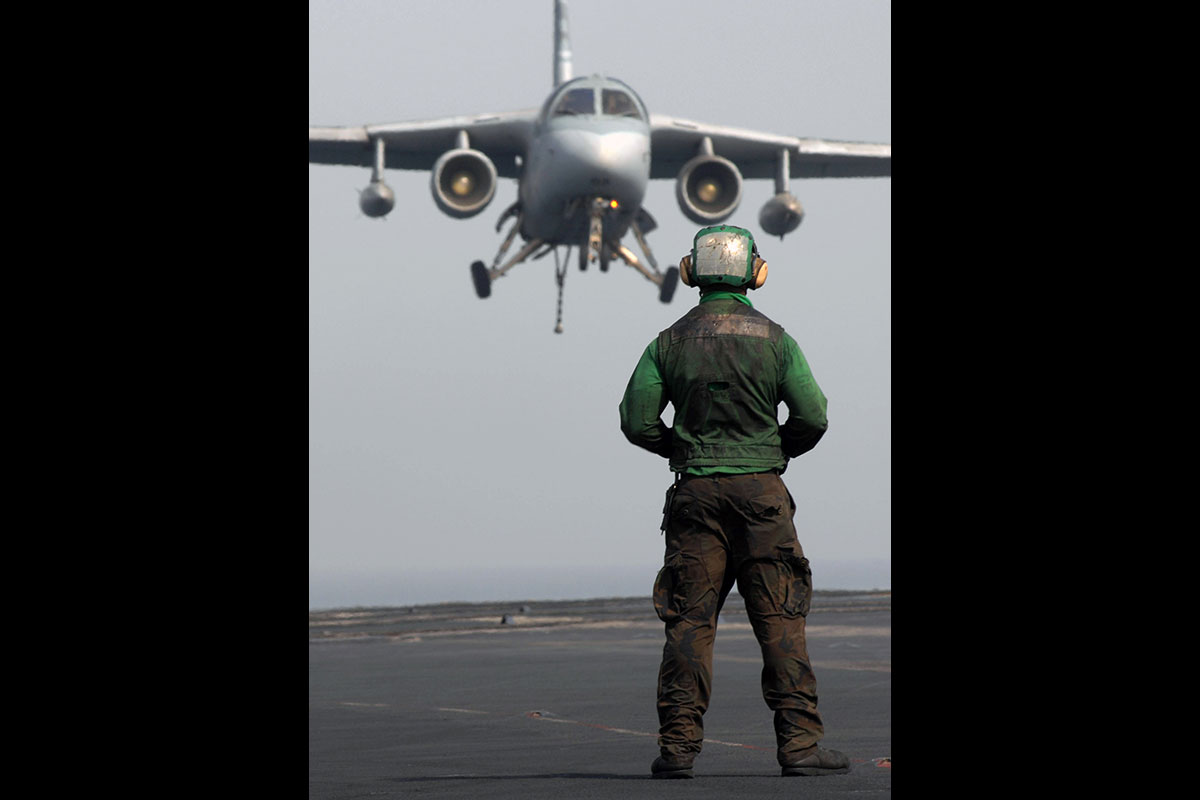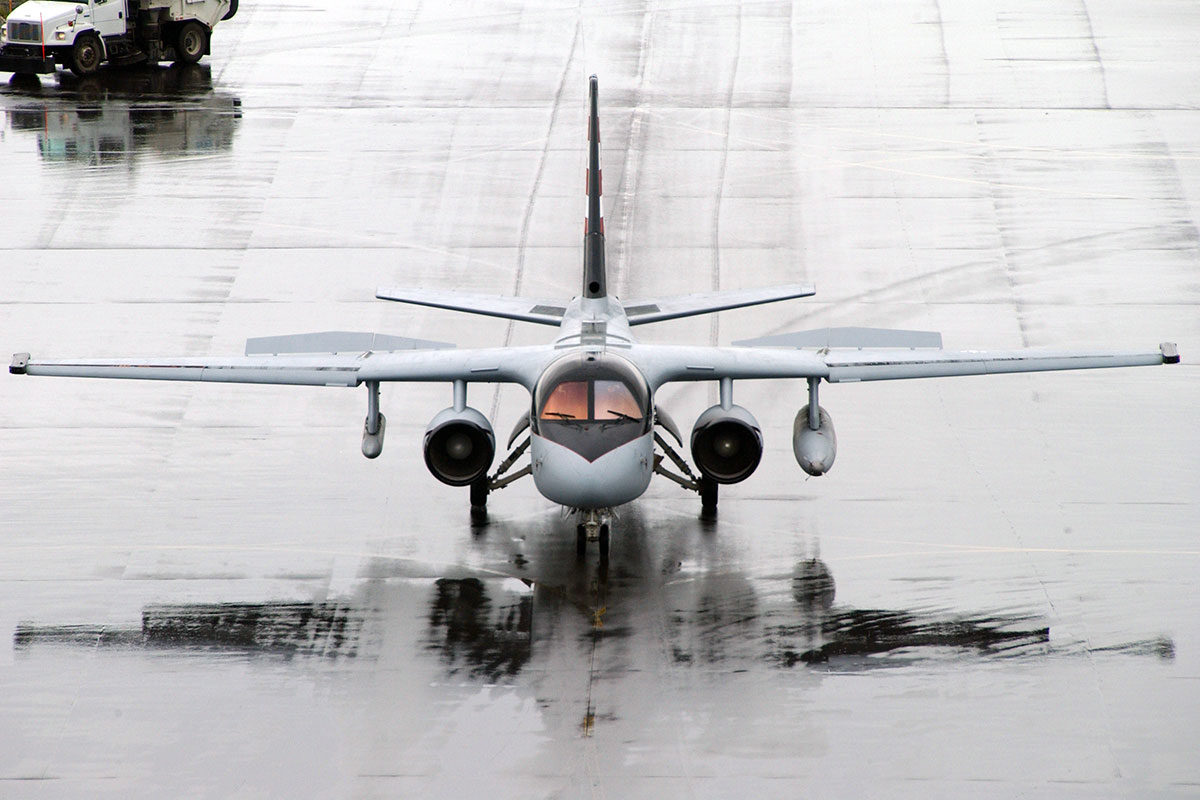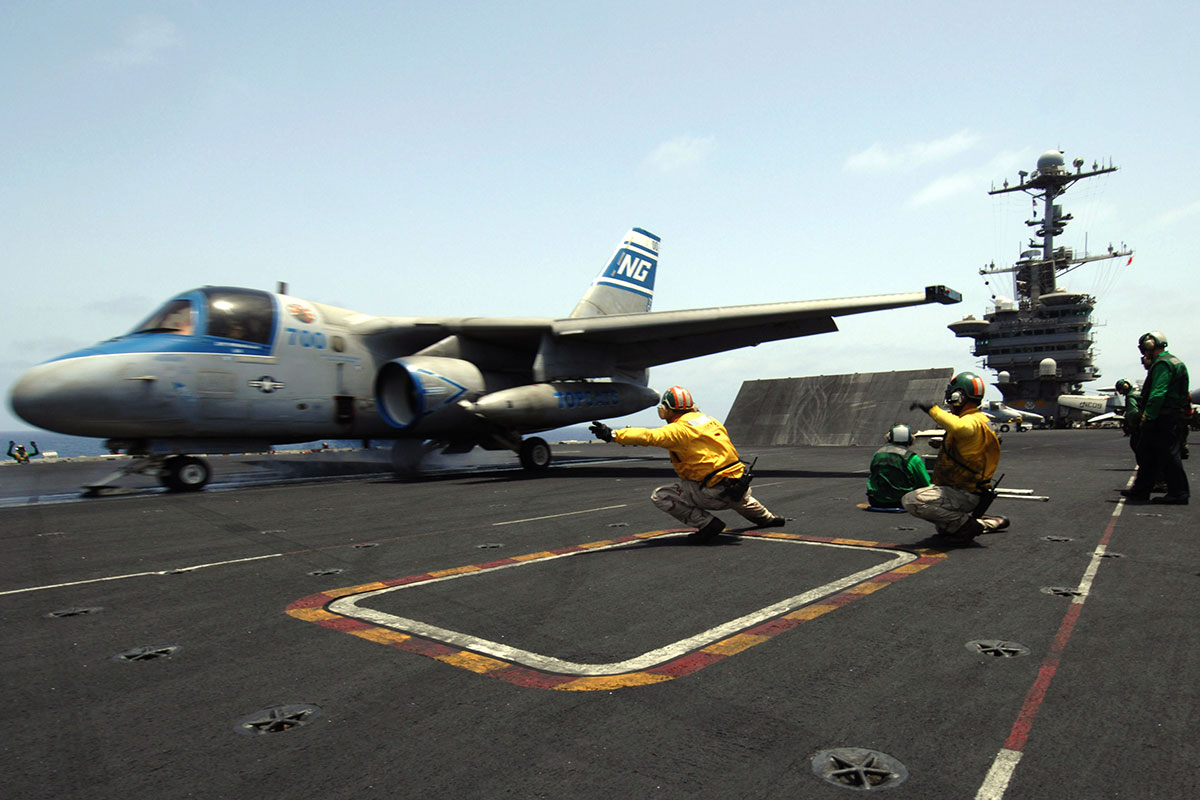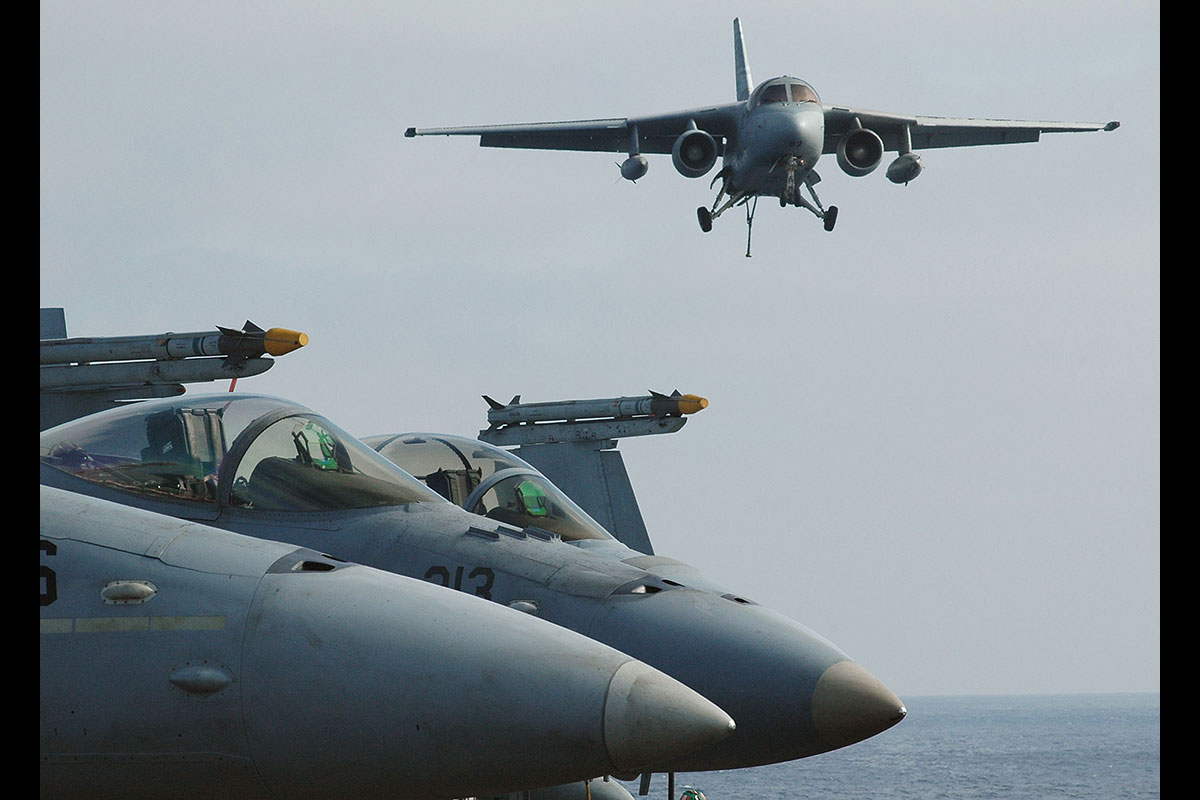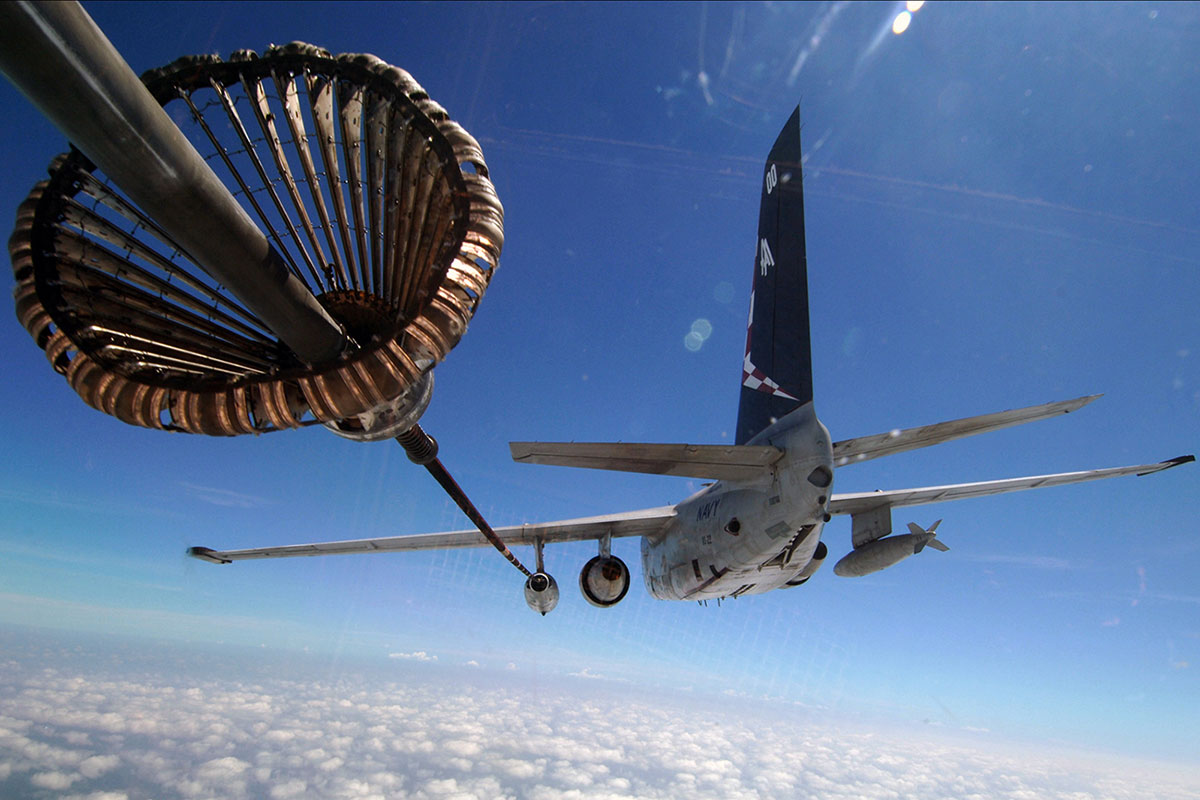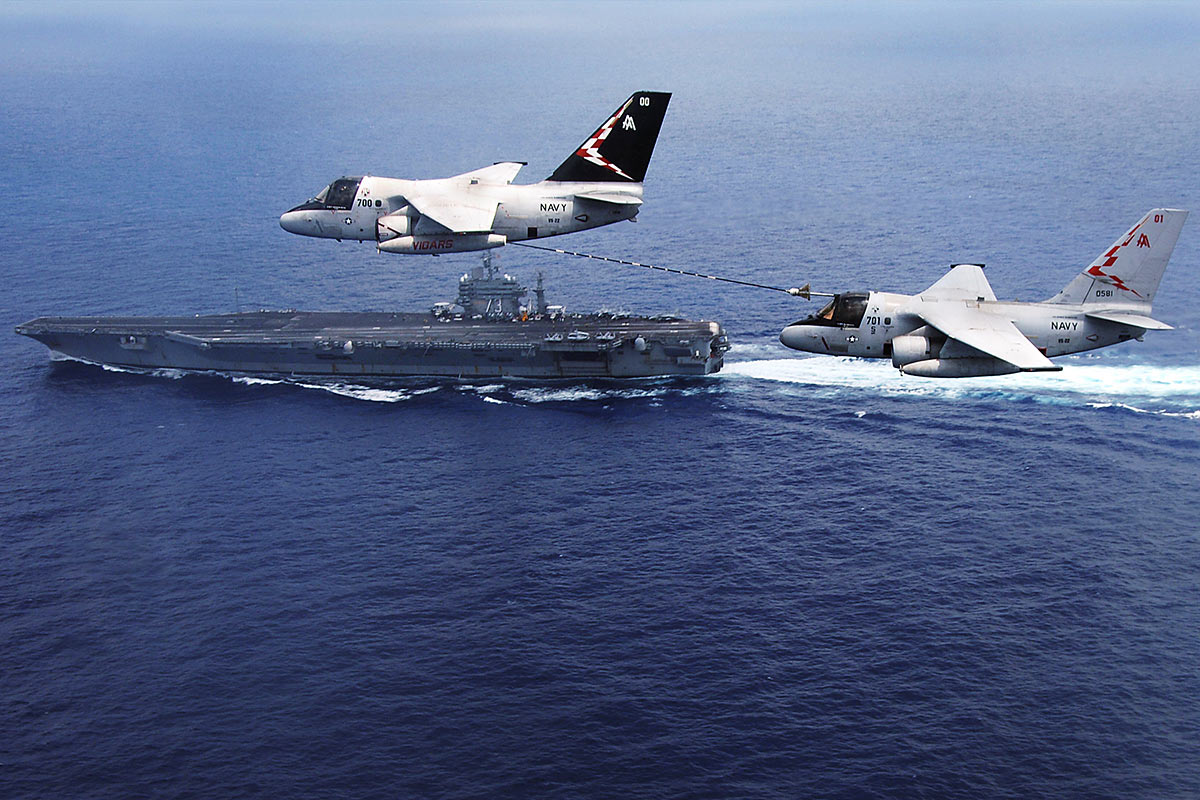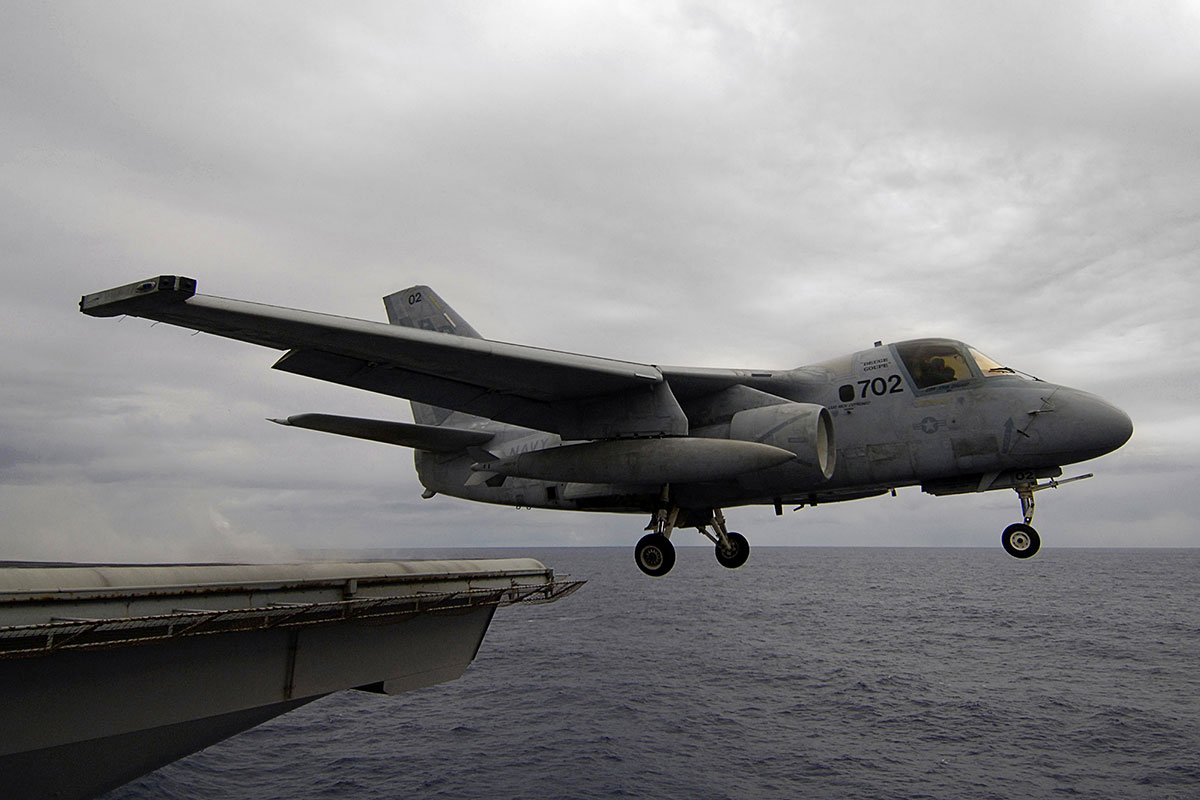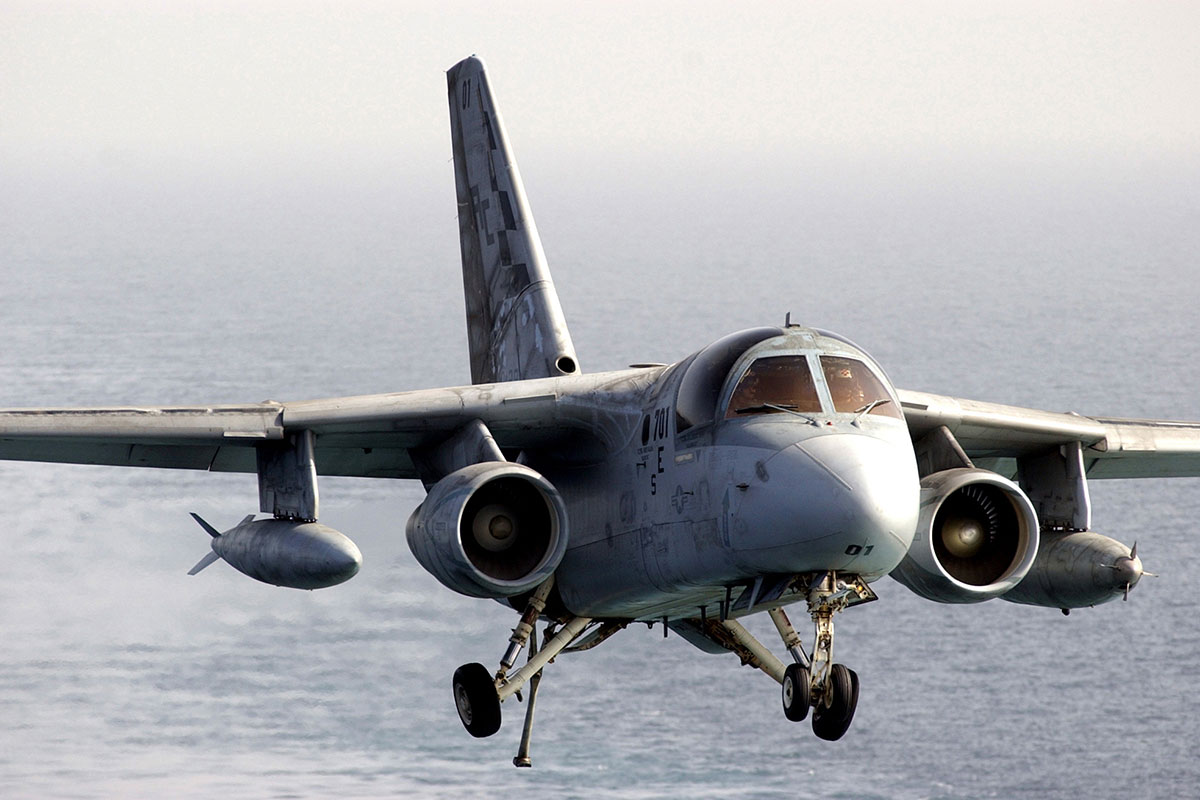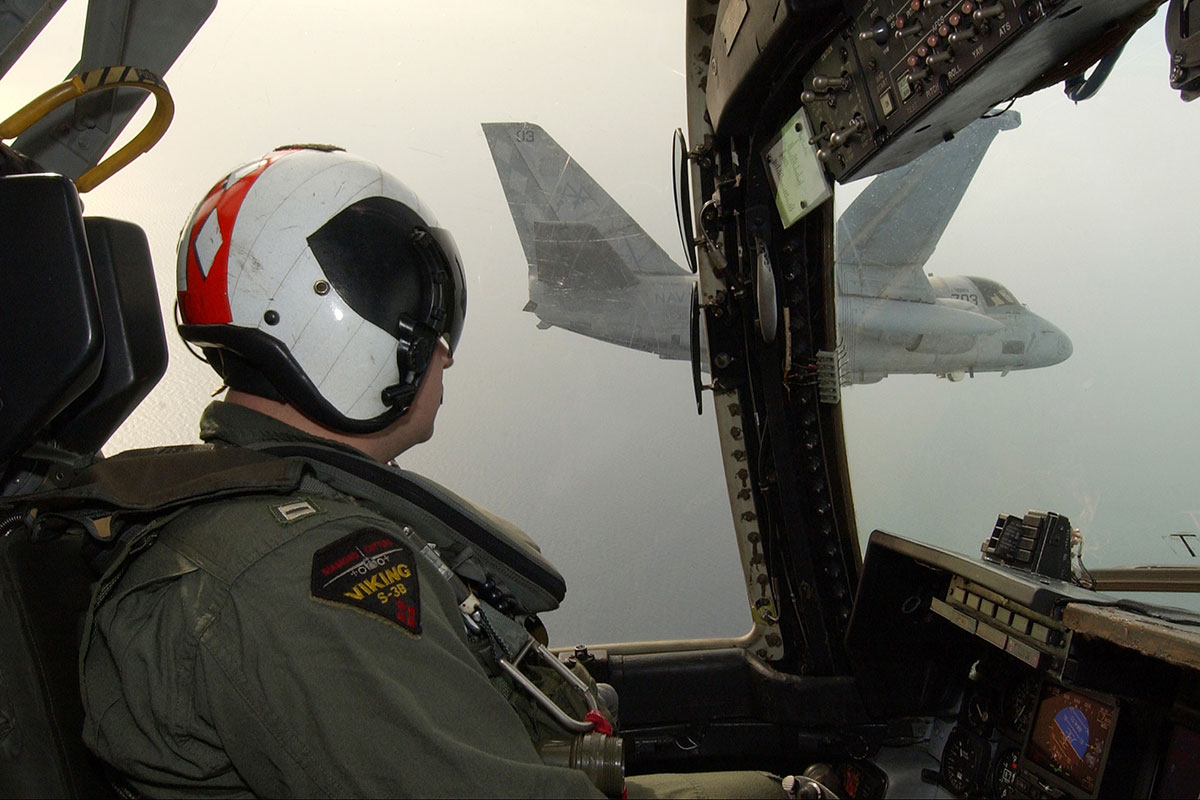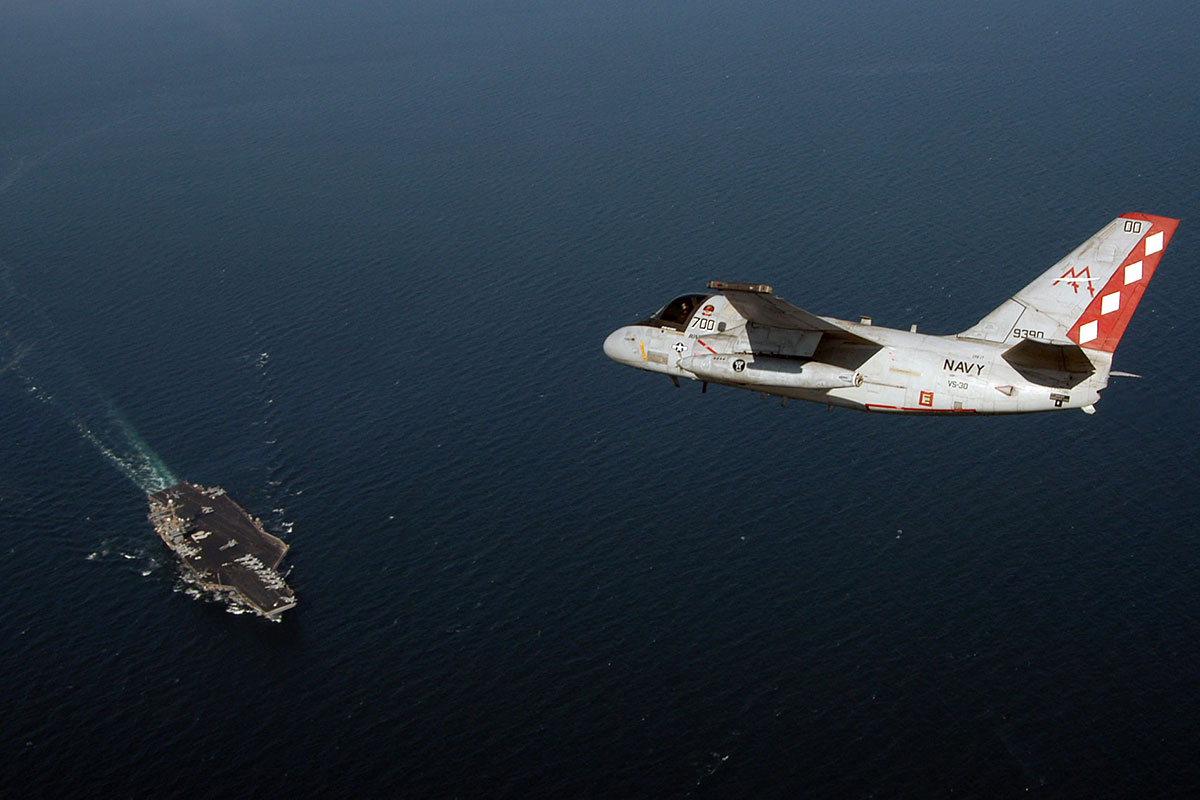Manufacturer: Lockheed Martin Aeronautics
Service: United States Navy
Armament: AGM-84H/K SLAM-ER, AGM-84 Harpoon and AGM-65 Laser Maverick missiles, bombs, rockets, Mk46/Mk50 torpedoes
Propulsion: Two TF-34-GE-400B turbofan engines (9,275 pounds of thrust each)
Airspeed: 450 knots/0.79 Mach.
Range: 2,300 nm
Crew: One pilot, two naval flight officers
The S-3B Viking is an all-weather, carrier-based jet aircraft, providing protection against hostile surface combatants while also functioning as the Carrier Battle Groups' primary overhead/mission tanker. Extremely versatile, the aircraft is equipped for many missions, including day/night surveillance, electronic countermeasures, command/control/communications warfare, and search and rescue.
The S-3B's high-speed computer system processes and displays information generated by its targeting-sensor systems. These systems include; Inverse/Synthetic Aperture Radar (ISAR/SAR), infrared (IR) sensor and an Electronic Support (ESM) system. To engage and destroy targets, the S-3B Viking employs an impressive array of airborne weaponry including the AGM 84 Harpoon Anti-Ship Missile, AGM 65 Maverick IR missile and a wide selection of conventional bombs and torpedoes. Future Viking aircraft will also have a control capability for the AGM 84 Standoff Land Attack Missile Extended Range (SLAM-ER) missile. The S-3B provides the fleet with a very effective fixed-wing, "over-the-horizon" aircraft to combat the significant and varied threats presented by modern maritime combatants.
Derived from the S-3A and formerly configured for anti-submarine warfare (ASW), the S-3B of the 1990s has evolved into a premier surveillance and precision-targeting platform for the Navy along with modern precision-guided missile capabilities.
In 1999, the Navy removed the acoustic ASW and aerial mining systems from the S-3B, which was initially designed to counter the massive Soviet naval threat, but retained its surveillance, anti-surface warfare and critical aerial refueling roles. With the retirement of the A-6E in 1997, the S-3B became the sole organic refueling platform in the aircraft carrier task force until the operational debut of the F/A-18E/F Super Hornet in 2002. During Operation Enduring Freedom in late 2001 and throughout 2002, forward-deployed S-3B Viking tankers flew more than 200 percent over their normal flight hours underway, enabling air wing strike fighters to reach their assigned kill boxes and return safely to the aircraft carrier from Afghanistan.
During Operation Iraqi Freedom, a VS-38 S-3B made history on March 25, 2003, with the first combat launch of a laser-guided Maverick missile, which severely damaged a naval target in the Tigris River near Basra, Iraq. Operational tempo during Iraqi Freedom was relentless and all S-3Bs available were positioned on the carrier deck. Sortie rates of 30 missions a day were not uncommon for squadrons operating from carriers in the eastern Mediterranean and the Persian Gulf. By 2004, the S-3B community has completed installation of modern and reliable upgrades to its communications, navigation and weapons systems, as well as installation of the advanced AYK-23 computer, significantly reducing operating costs and increasing combat capabilities.
Also in 2004, the Viking community commenced execution of the S-3 “Sundown Plan,” a retirement plan highlighted by a phased withdrawal from active service by 2009. As carrier air wings are equipped with two Super Hornet squadrons, the respective S-3 squadron will be deactivated. VS-29 and VS-38 were deactivated in April 2004, followed by Japan based, VS-21 in January 2005. VS-35 and VS-30 also retired in 2005 while VS-33, VS-41 were deactivated in September 2006. The remaining squadrons VS-22, 24, 31, and 32 will be deactivated incrementally by February 2009. As of Oct. 1, 2006, about 30 S-3Bs remained in active service.
Lockheed Martin’s Full-Scale Fatigue Test to determine the aircraft’s fatigue life expended and areas of structural concern was completed in 2004. The results demonstrated that the basic service life of the airframe could be as high as 23,000 flight hours. The average number of flight hours on all S-3Bs is currently less than 13,000 flight hours. In March 2006, CNAF approved the modification of 13 S-3Bs to carry the Low Altitude Navigation Targeting Infrared for Night (LANTIRN) system, obtained from retiring F-14D Tomcat aircraft, to fulfill NTISR mission requirements in support of Global War on Terror (GWOT). Additionally, a video data transmission system has been installed to facilitate the sending of all aircraft sensor video to ground units equipped with the Rover III tactical ground station. One prototype has been delivered to VS-32 and is presently deployed. The remainder of the installs LANTIRN and video transmission systems will be completed by early 2007, enabling the S-3B Viking to remain a viable multi-mission platform until 2009.
